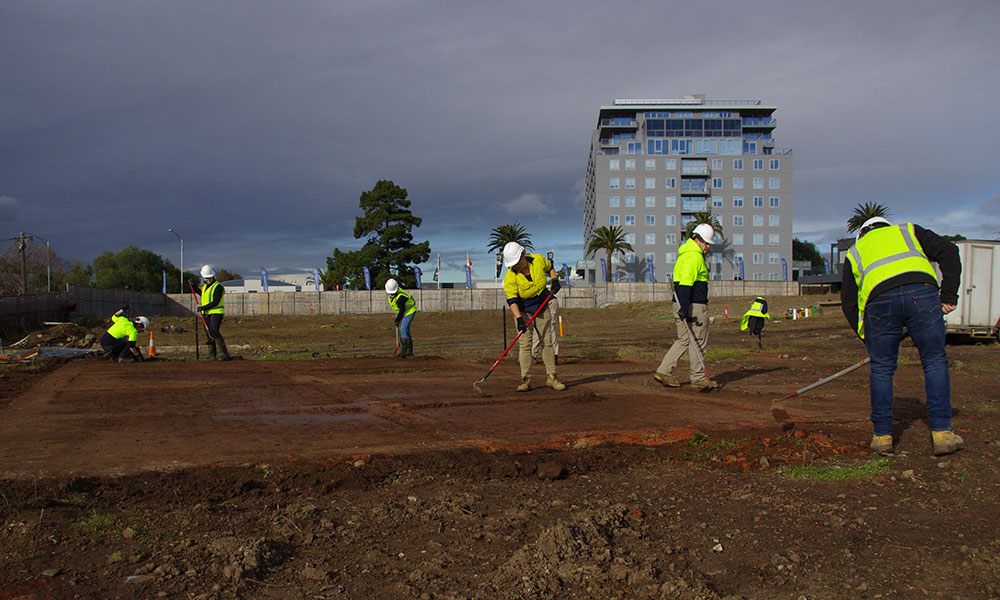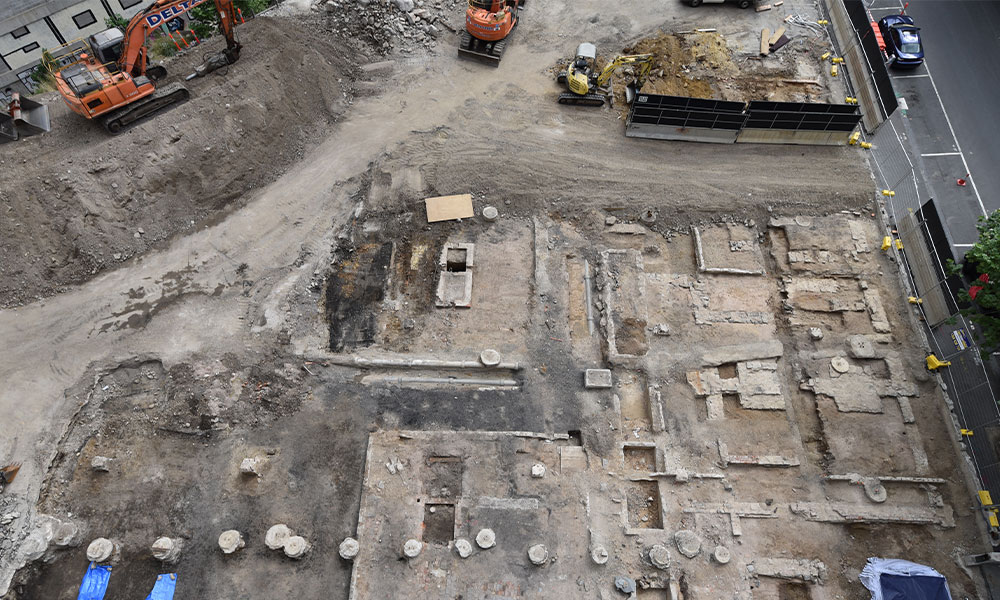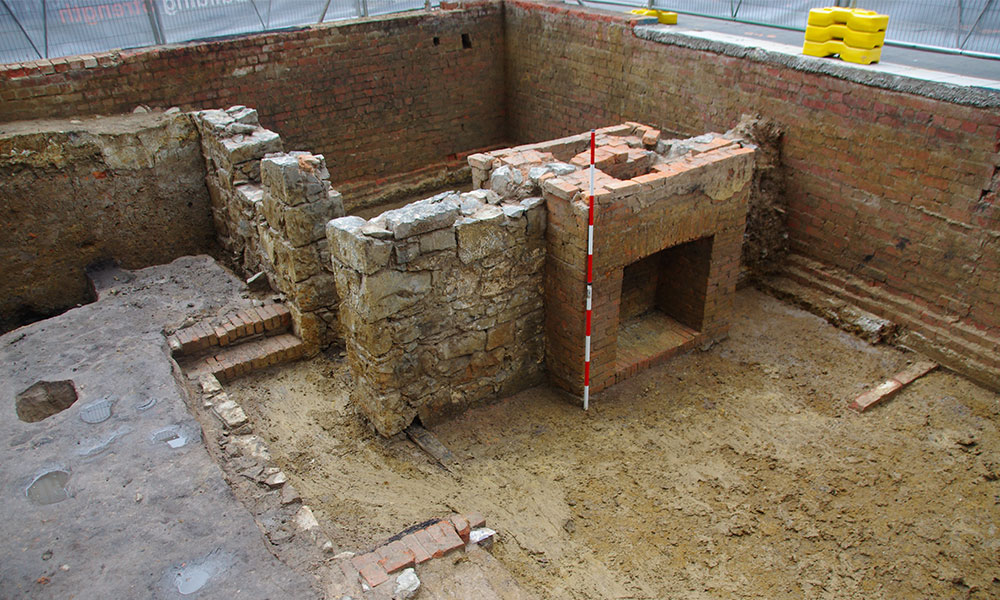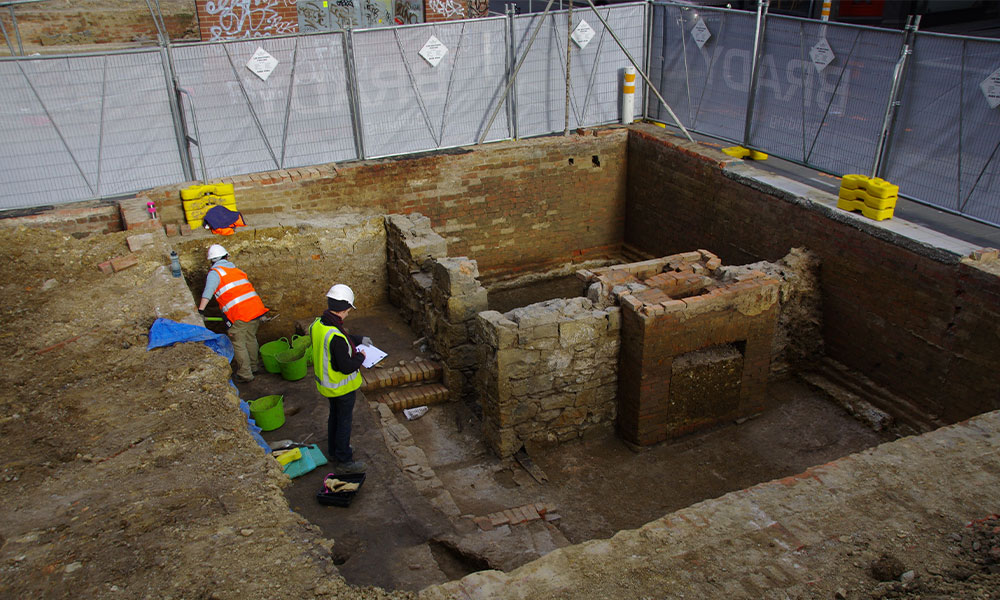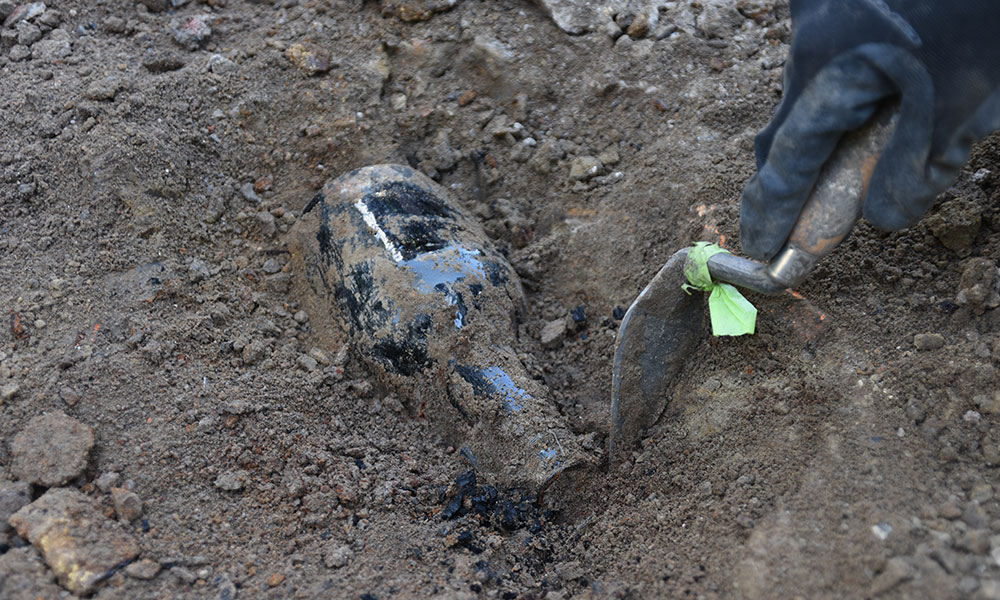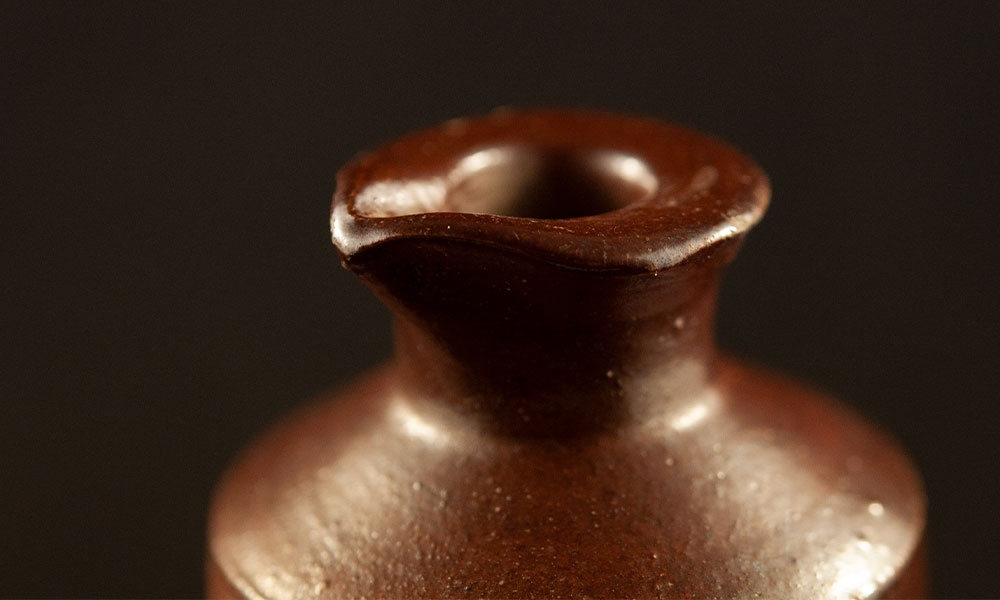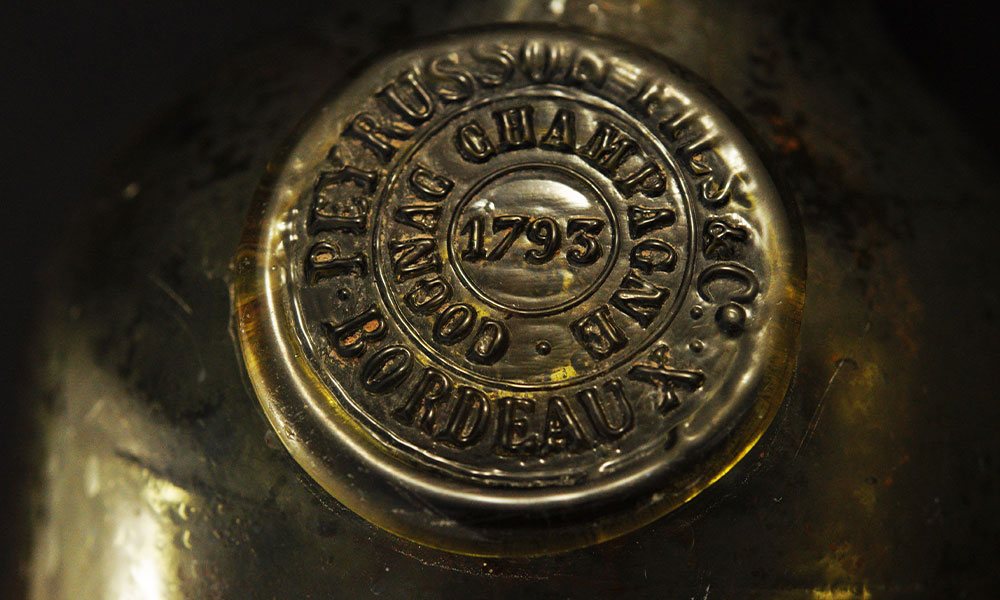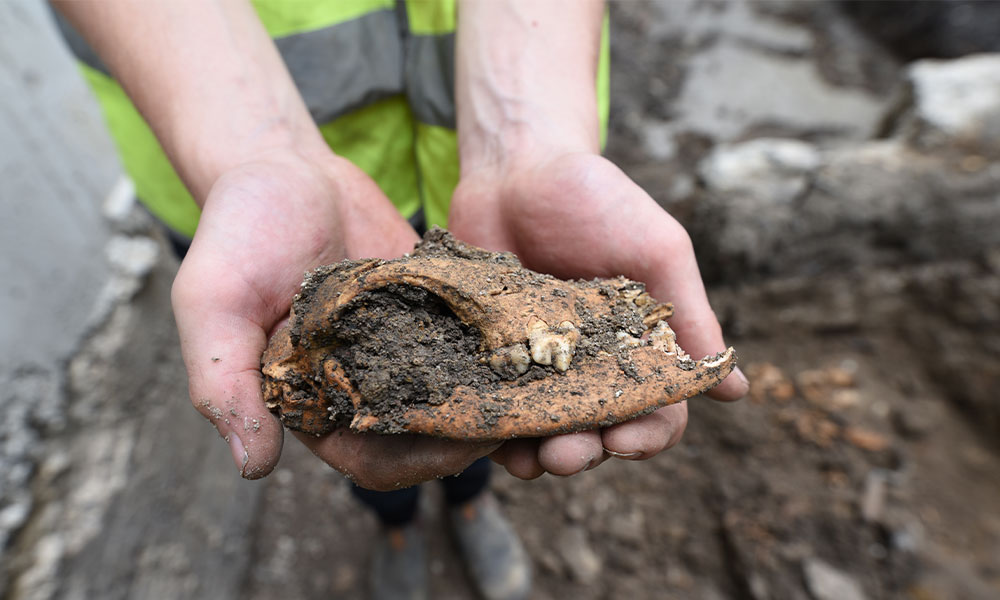What is an historical archaeological site?
All historical archaeological sites in Victoria are protected by law. This means you need approval from Heritage Victoria to disturb them. The Victorian Heritage Inventory is a list of known historical archaeological sites in the State.
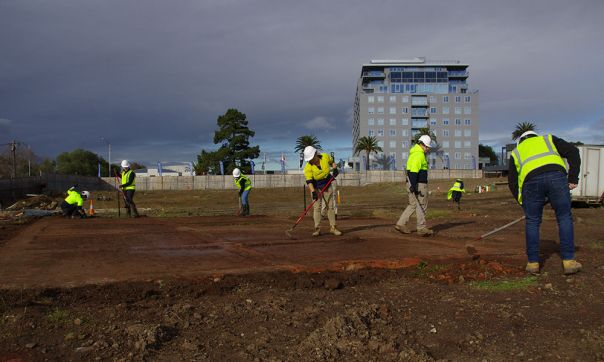
- Melbourne excavation

- Melbourne excavation

- Melbourne excavation

- Melbourne excavation

- Excavating a glass bottle

- Ceramic vessel

- Glass bottle blob seal

- Remains of a dog
An archaeological site is a place which:
- Contains buried evidence like an artefact, deposit or feature which is 75 years old or more.
- Provides information about past activity.
- Needs archaeological methods to reveal information about the place.
- Isn't associated only with Aboriginal use.
Aboriginal archaeological sites are protected under the Aboriginal Heritage Act, which is regulated by First Peoples - State Relations.
These diverse, historic sites relate to:
- the earliest non-Aboriginal visitation and settlement in Victoria
- contact between Aboriginal and non-Aboriginal people
- coastal sites, where sealing and whaling were once carried out
- the establishment and growth of towns and settlements
- mining areas in the gold rush years
- industry, like saw mills, potteries and breweries
- former institutional sites like orphanages, prisons, asylums and industrial schools
- former commercial sites like pubs, general stores, dentists, haberdasheries and furniture stores
- former residential sites like houses, homesteads, cottages, and outbuildings
Historical archaeological sites might include features like:
- building foundations or post holes
- buried items like old bottles, ceramics, clay pipes, toys
- kitchen scraps like bones or shells.
What is the Victorian Heritage Inventory?
The Victorian Heritage Inventory is a list of about 6,500 known historical archaeological sites. Some sites can be included on both the register and the inventory. Enter an address to see if a property or place is on the list.
Note that we still protect sites that aren't on the inventory. You need to apply for our approval to disturb any archaeological site, including for geotechnical testing, mining and prospecting.
Many archaeological sites have not yet been discovered or recorded. You need to apply for our approval to disturb any archaeological site, including for geotechnical testing, non-destructive digging, and mining purposes. Penalties apply for disturbing archaeological sites without prior approval.
If you think you’ve found an archaeological site, please contact us.
Protecting Victoria’s historical archaeological sites
Victoria contains a rich heritage of historical archaeological sites that tell the story of the state’s historic settlement, growth and change. The state’s archaeology is very diverse – it includes forgotten bush cemeteries in the High Plains; remains of whaling stations at Wilsons Promontory; abandoned mining sites from the Goldrush years; ruins of houses, farms, hotels and townships; and much more.
Since the early 1970s Victoria has benefitted from heritage legislation that protects archaeological sites. Today, the Heritage Act 2017 provides protection for the state’s archaeology.
Collaboration with the miners and prospectors association of Victoria
As a result, and to support the activities of prospectors, the legislation was drafted to accommodate their needs. As a result of these collaborations, the new Act was changed to allow the collection of individual artefacts, while still preserving a strong level of protection for archaeological sites. Archaeological sites are able to provide more information about the state’s historic settlement, growth and change than individual artefacts, and it is important that this information is not disturbed or lost by the indiscriminate targeting of any artefacts that form part of a site.
How does the Heritage Act protect historical archaeological sites?
Section 123 of the Act states that it is an offence to knowingly or negligently disturb an archaeological site unless an approval (in the form of a Consent) has been obtained from Heritage Victoria. Only a small number of exceptions apply. Strong penalties may apply for people who have been found to disturb a site without obtaining a Consent in contravention of section 123.
Heritage Victoria issues more than 100 Consents every year to authorise activities on archaeological sites. In most cases, Heritage Victoria requires that careful investigation and recording takes place during any site disturbance, and most Consents are issued to professional archaeologists.
What is an archaeological site?
The Heritage Act defines what is, or is not, an archaeological site, for the purposes of the protections in the Act. A site must contain an artefact, deposit or feature which is at least 75 years old before it can be considered ‘archaeological’. In addition, the site must provide information of past activity in the State, and require archaeological methods to reveal information about the settlement, development or use of the place.
A site that is associated only with Aboriginal occupation of the place will not be an ‘archaeological site’ under the Heritage Act, but is likely to be protected under different legislation – the Aboriginal Heritage Act 2006.
In practice, most archaeological sites will contain buried or ruinous elements and layers that require archaeological skills (like excavation) to make sense of the place. On many sites, ruins or foundations of former structures may be visible and scatters of artefacts (including fragments of glass, ceramic, metal and animal bones) may also be present. Other common features that may indicate the presence of an archaeological site include remnant gardens or plantings of non-native trees, old fences and stone walls, and flat or terraced land where structures were once located.
These definitions mean that not all places in the state that are more than 75 years old are classified as archaeological sites – only those places which meet all the requirements above, such as those sites that include ruinous, buried or remnant traces of former activities.
What about artefacts?
The Heritage Act provides strong protection for historical archaeological sites, but individual artefacts (if they are not associated with a site) are not protected in the same way. Under the terms of the Act it is not an offence to identify/detect and collect an isolated or single object/artefact that has no association with an archaeological site. However, it is necessary to obtain the approval of the relevant land owner or land manager to access land, and remove objects. It is necessary to obtain approval from the relevant land manager to remove objects from Crown land.
In this way, the Heritage Act does not prevent prospectors from finding and collecting artefacts, so long as they avoid archaeological sites and obtain land owner approval. While the Act does not prevent the collection of individual objects, it does provide strong protection for archaeological sites because the removal of artefacts from sites is a destructive process that compromises the condition and intactness of significant heritage places.
Buying and selling archaeological artefacts
Section 129 of the Act sets out requirements that relate to the buying and selling of archaeological artefacts. In most cases, a Consent is needed from the Executive Director of Heritage Victoria to authorise the purchase or sale of archaeological artefacts.
What if I have a Victorian miner’s right?
Prospectors should be aware that the holding of a Victorian miner’s right allows them to prospect and fossick for gold, gemstones and other minerals in Victoria but does not confer any rights in relation to the requirements of the Heritage Act 2017.
Access to collections
Heritage Victoria manages a large collection of archaeological artefacts from land and maritime excavations. This is a unique and significant collection, available for research, by appointment.
Contact Heritage Victoria
If you have questions about the protection and management of the state’s historical archaeology, please send an email to: heritage.victoria@transport.vic.gov.au.
Page last updated: 05/07/24
